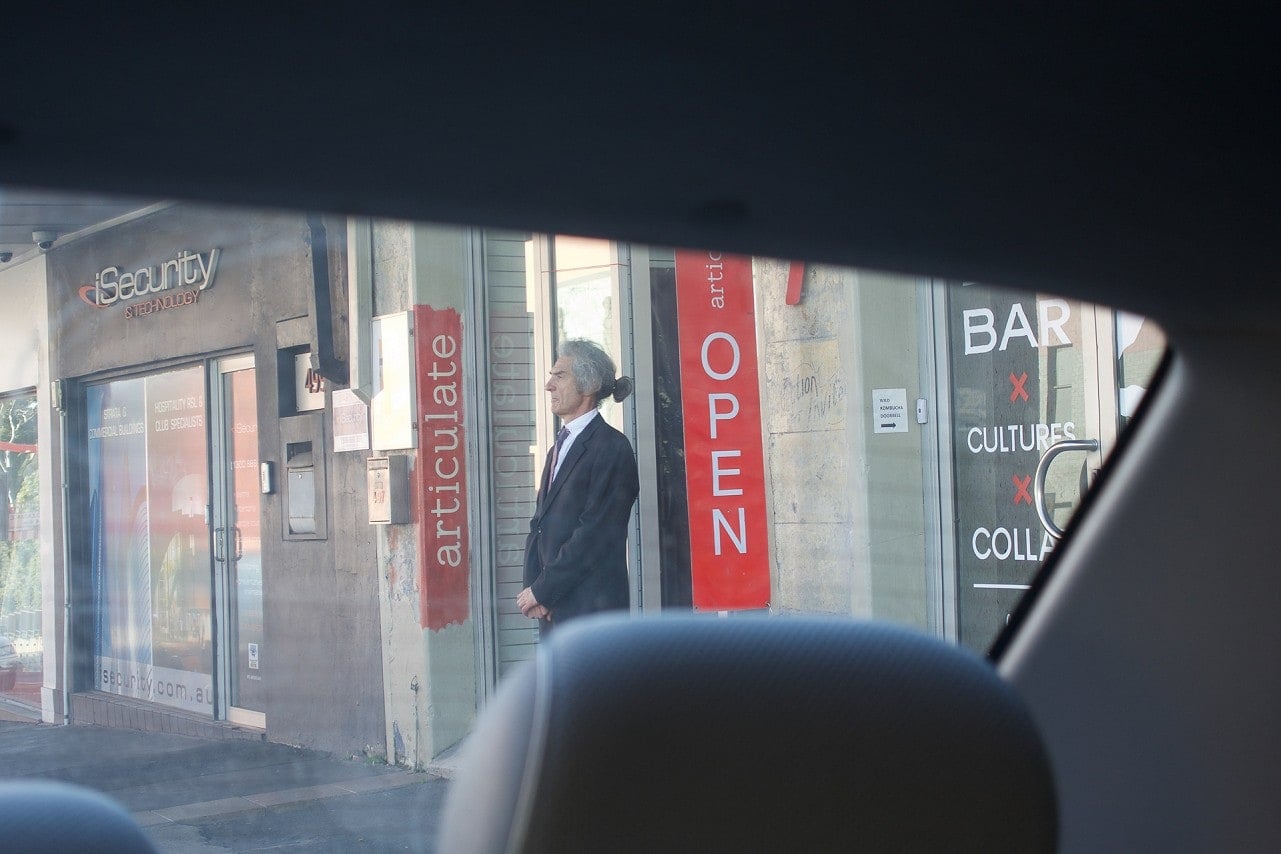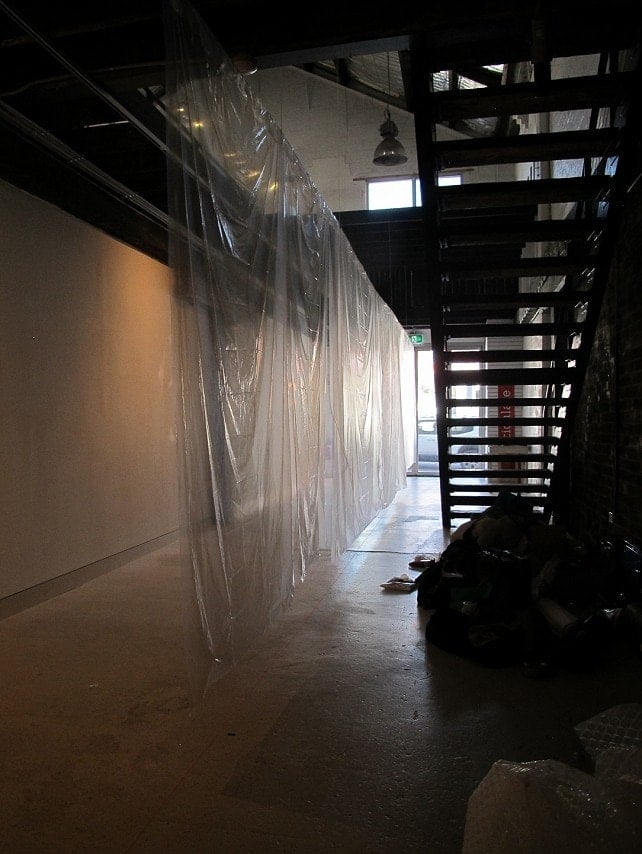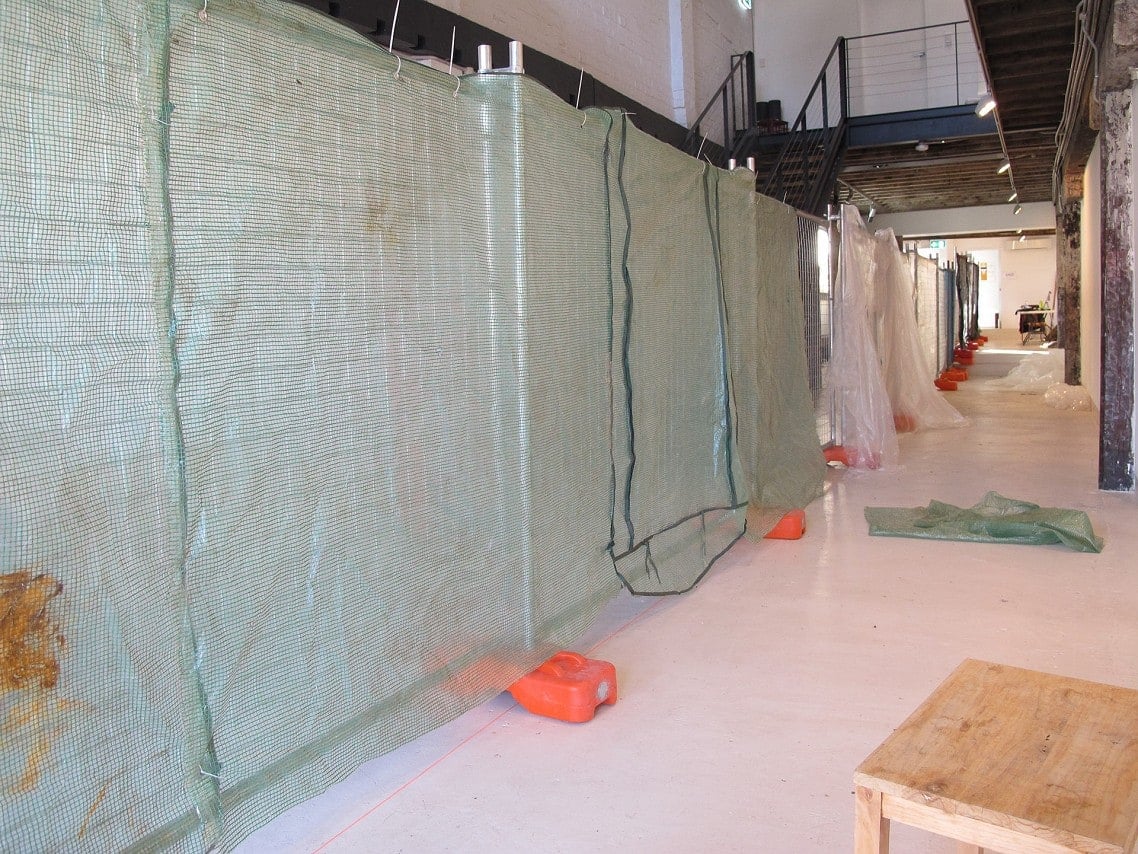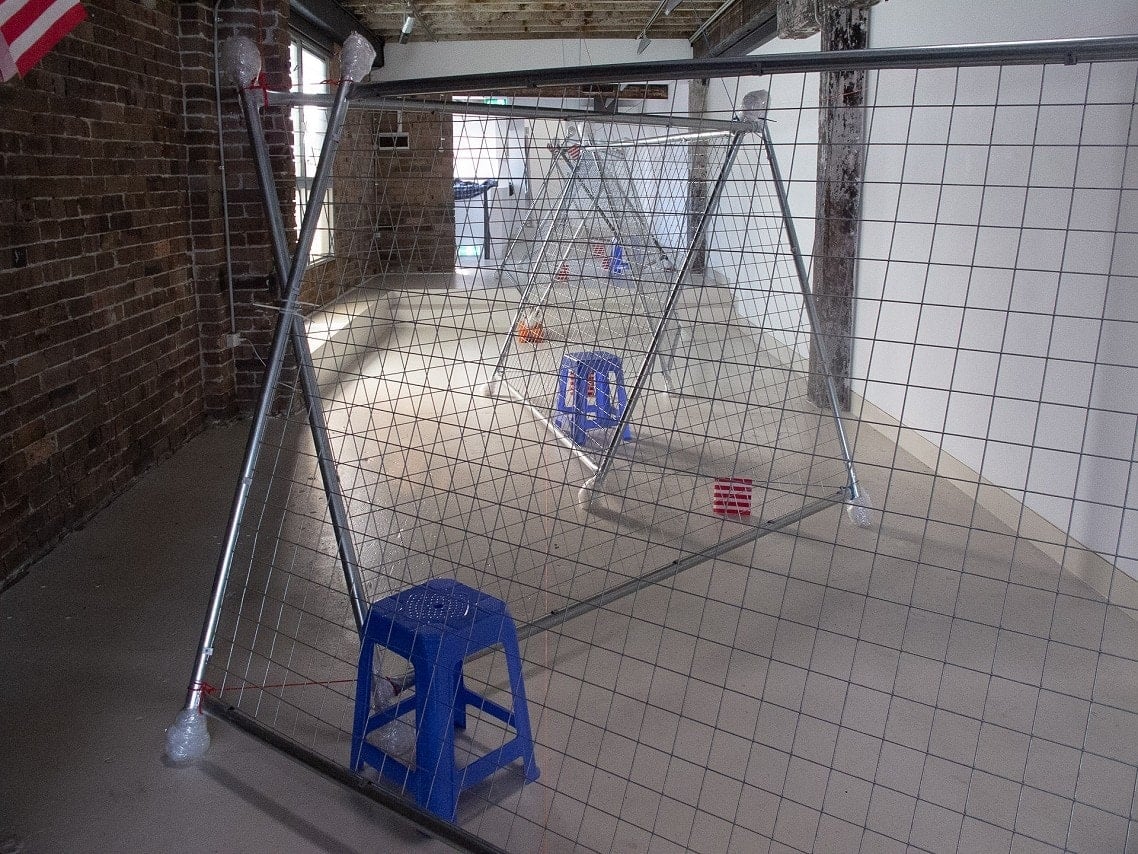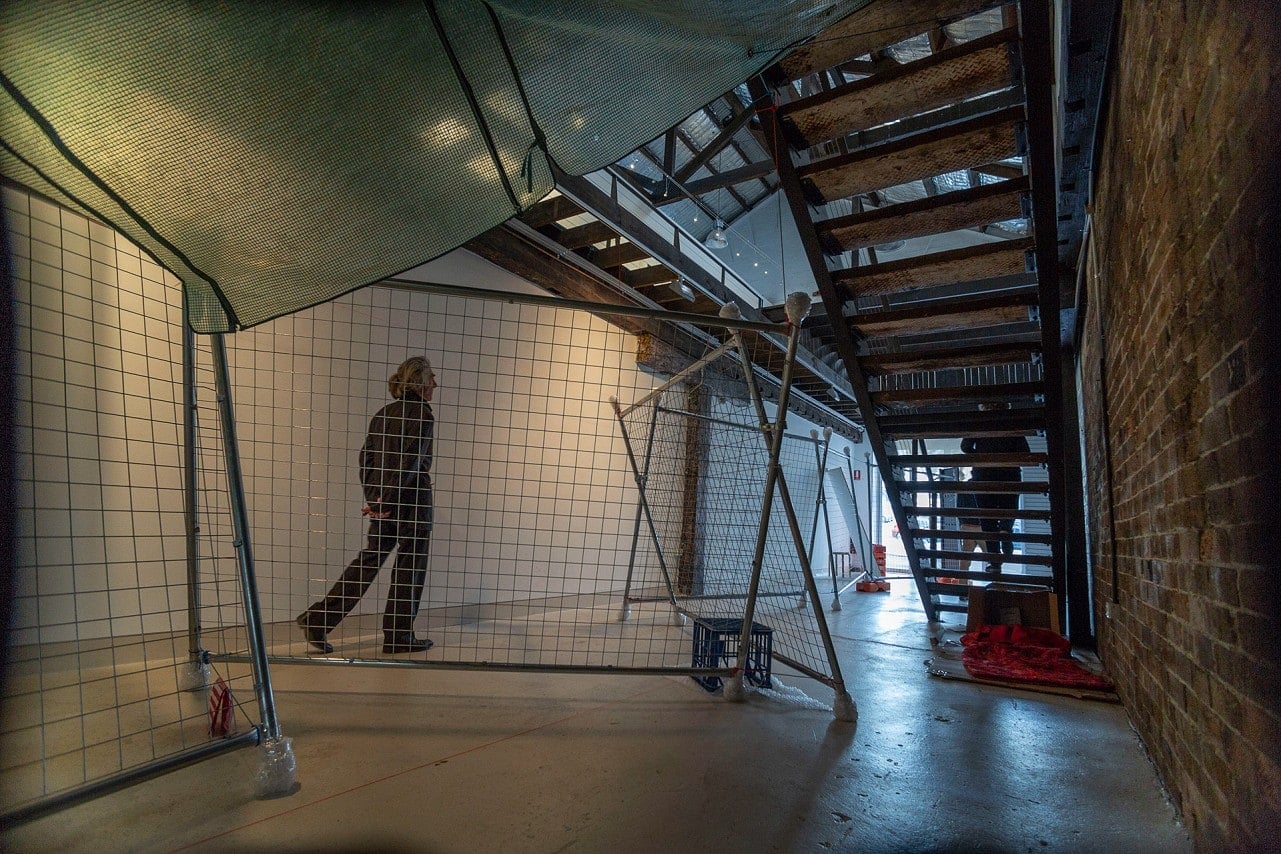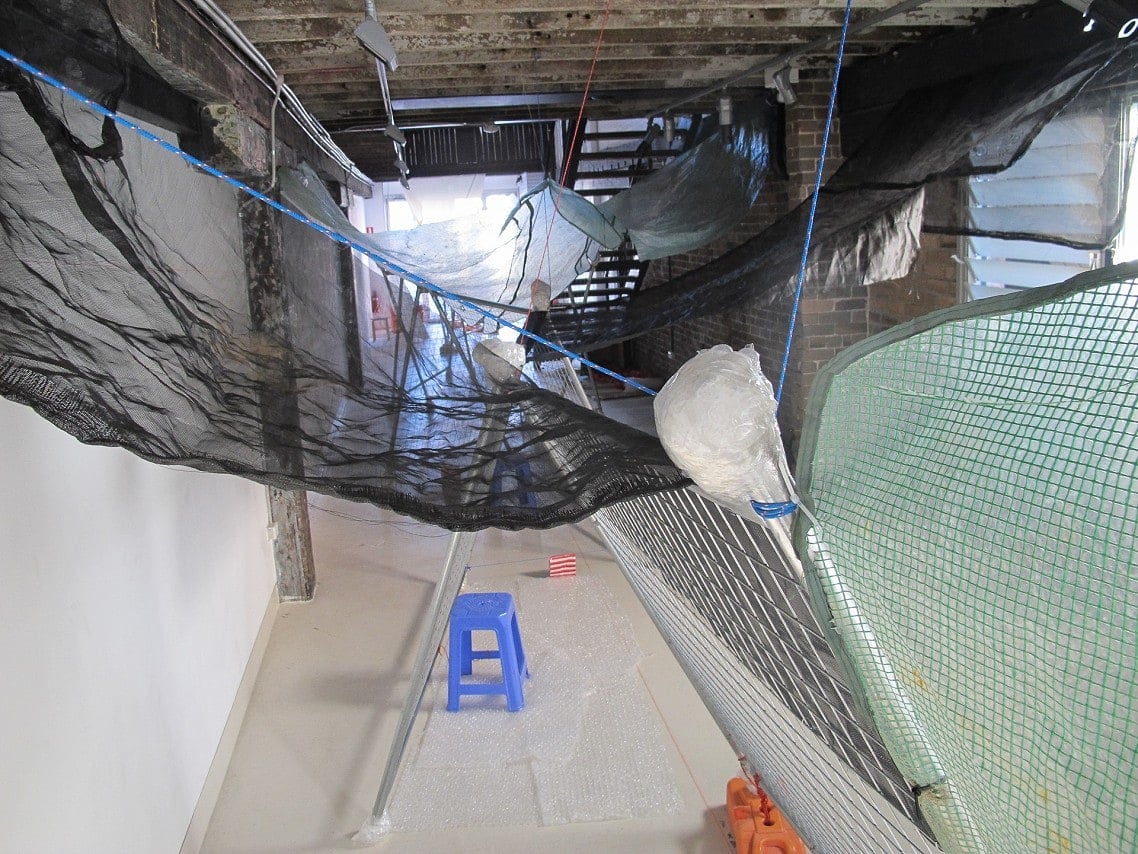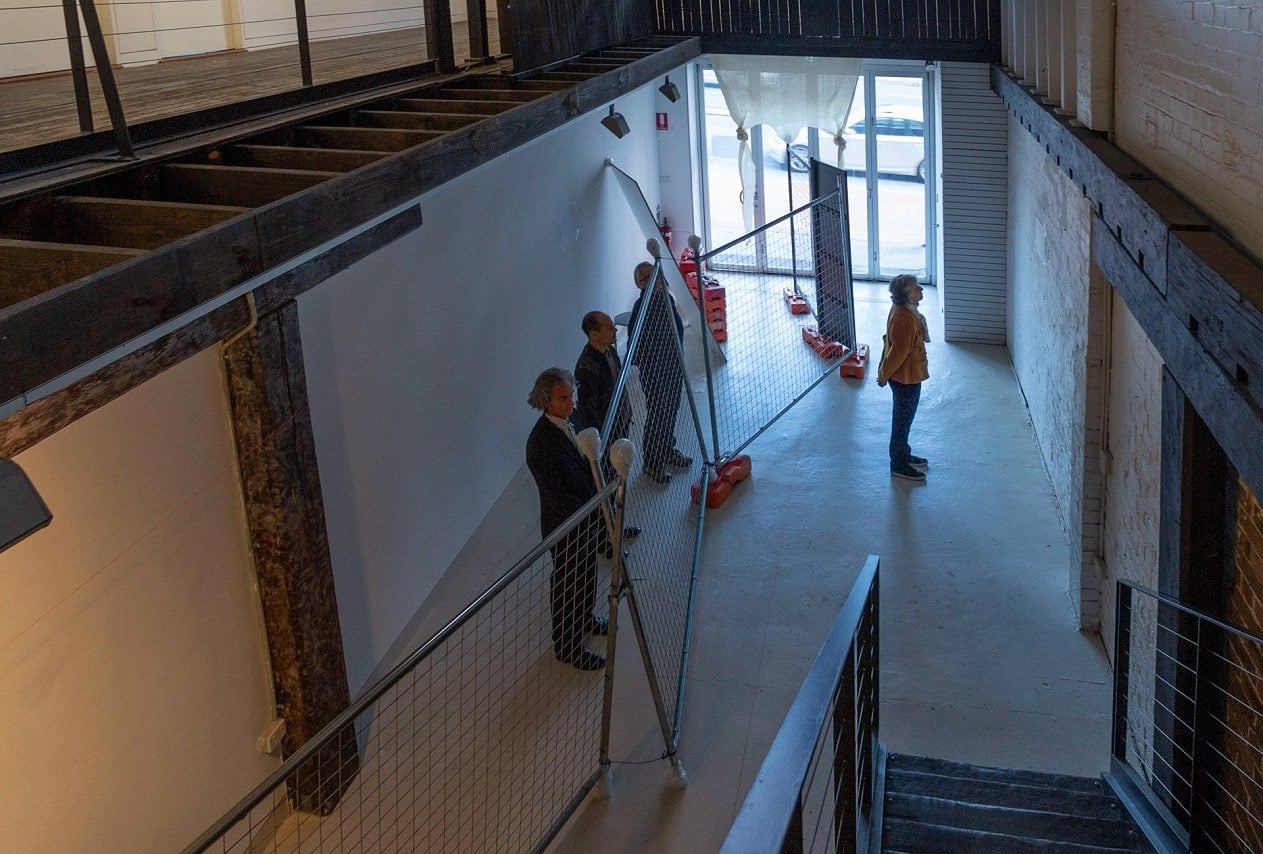Dividing/Line 2018
31 Jul 2018 : Articulate Project Space, Sydney, Australia
In Dividing/Line I have attempted to set up a ‘non-space’, intending it to be devoid of any art-work or performance. Though there is indeed an installation, it is comprised of hired fencing, and although I am present in the work, I attempt to participate rather than perform. The barrier fence reflects neighbouring construction sites and incorporates found materials. The thematic of lines, borders and boundaries is part of the broader exploratory topic of diasporic experience. Here at Articulate this issue is made societal, segregating an ‘audience’ who gather to witness. What is created with the visitor bodies is an apart-heid, an arbitrary division of participants. By listening to the announcements and obeying the instructions they traverse the barrier as opposed communities. The work is based on the single space of ‘the gallery’ and in undermining its purpose. It has multiple conceptual precedents and influences, including reference to Chris Burden: Exposing the Foundations of the Museum 1967, Pierre Huyghe: After ALife Ahead, Skulptur Projekte Münster 2017, and two works at the Biennale of Sydney 2018: Jacob Kirkegaard’s Through the Wall at the Art Gallery of NSW (which replicated a section of the Israel-Palestine Barrier), and Marco Fusinato’s Constellations at Carriageworks (which divided a large space with a huge wall).
A line cuts both-ways, space is always contested. The dividing/line separates groups : spectators/witnesses : a face-off. My interest was to dissect the social norms and expectations of spectatorship and the politico/social responsibility of the artist. Where does the dividing/line lay between the whole and its parts? Is a line drawn (as : in the sand) threat or challenge? limit or demarcation? bloodline or barrier? Enter by the backdoor : intimate friend or surreptitious visitor ? Enter by the front door : invited guest or official inquisitor ? Borders, domains, territories, conflicting interests and patterns of usage compete for attention. Whether whole or single space, it offers neither carte blanche nor terra nullius. I approached the gallery as a domain occupied by artists within the larger territory of the immediate vicinity. Transposing notions of migration frontiers, diasporas, regulation, forced separation and division of communities was my modus of installation. I set out to problematise, conflict and conflate, causing inconvenience, consternation and confusion, undermining habitual convenient flow. The problem with a whole space is that you cannot claim free reign over its entirety. To re-order the space I considered access, entry and exit, door and stairways, reversing and questioning. Cutting into the space I interrupted its regular patterns and confused visitors by making it appear that the venue was closed or under renovation. Fencing is a ubiquitous mundane material, a hoarding or security or safety device, so how can it be considered art? The division of space demarcated a redirection of those who entered. Starting with a simple string line on the floor, then a suspended plastic sheet on an overhead line, each side occluded from view, referencing East and West. From upstairs, not part of my whole-space, a privileged overview. Straight and upright vertical fencing, progressively leaned, collapsed and careened as suspended barriers traversed the space, threatening to fall, obstructing passage, no longer a division as much as a cobbled together ghetto, a favela signifying mismatched use and history. Employing hired and scavenged materials, I completed the work with distorted spoken audio suggestive of an Orwellian/ Huxleyan dystopia, a border control scenario from which one might not escape. My continuous presence as security guard or overseer reinforced the allusion to domination by an authority. Participants observed those on the other side as differentiated, divided by mis/fortune, beliefs, practices and purpose. Sleeping niches, milk-crates and stools, little safety flags and stacked orange base-weights completed the Folly.
Project Details
| Dates | 31 Jul 2018 to 19 Aug 2018 |
| Duration | 3 weeks |
| Category | installations |
| Credits | Artist: Alan Schacher; Audio written & spoken by Alan Schacher; Audio recorded & engineered by Micahel Toisuta; Photographs by Alan Schacher, David Brazil, Mike Leggett, Peter Murphy; Video: Peter Murphy. This project was supported by Articulate Project Space through a grant from the Inner West Council. |
